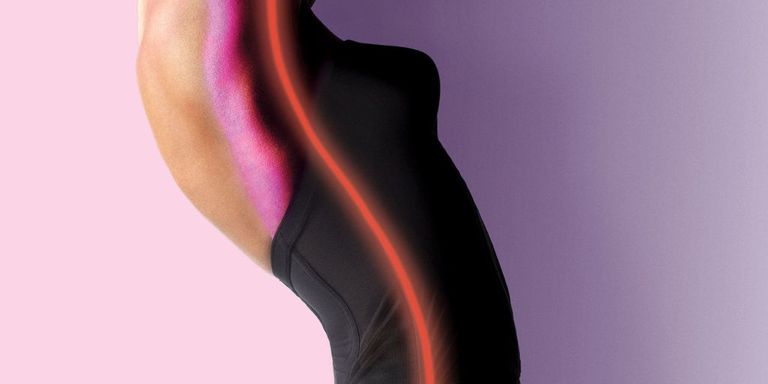Tiger stripes. Angel scratches. We’ve all tried our best to come up with more charming names for these less than charming squiggles on our skin, but the truth is that for many, many women (it’s estimated that over 80% of us worldwide have them) stretch marks are a fact of life. Yet, for such a common malady, most of us know surprisingly little about them; and yes, we’re including doctors in that “us.”
On a basic level, stretch marks appear to be similar to superficial scarring. Typically they start off with a reddish cast, and then settle down into permanent lines that are either paler or darker than the skin surrounding them. They’re often slightly different in texture from the skin surrounding them as well, frequently slightly lower than the overall level of the skin, or sometimes with a slightly slicker surface, like scar tissue, both of which can make them stand out.
Because of how often they’re associated with rapid size changes in the body, traditional wisdom says that it’s those changes that are at the root of causing stretch marks, but the truth is that there isn’t great scientific evidence yet to prove that. “It’s not really well known as to what causes stretch marks,” says dermatologist Neil Sadick of Sadick Dermatology in New York City. While he says it’s likely that the marks are due to an abnormality in the skin’s elastic tissue (things like collagen and elastin) the exact mechanism that leads to the formation of those little stripes isn’t clear.
What we do know is that they often show up on localized parts of the body where the skin is forced to grow at an accelerated rate, like during pregnancy (the most common source of stretch marks – 90% of pregnant women are estimated to experience them), growth spurts, or sudden weight gain. But other factors can also play a role in whether or not you find these tiny filigrees decorating your derriere. “Genetic predisposition, utilization of topical or oral corticosteroids, certain endocrine diseases like Cushing’s syndrome,” can all be predictors of stretch marks as well, according to Sadick.
As you might have guessed, all of that means that preventing stretch marks poses a serious challenge. Your best bet, Sadick says, is to stay away from medications like the aforementioned corticosteroids (a class of steroid that is generally used to treat inflammation like skin allergies, asthma, and arthritis), avoid sudden fluctuations in size(yes, that includes rushing to bulk up on muscle) by gaining or losing weight consistently rather than abrupty, and making sure that skin is well-moisturized, which helps improve its elasticity. Dermatologist Macrene Alexiades also suggests a diet rich in fatty acids, protein, and vitamins: all the things skin needs for good wound-healing and skin development.
Okay, but what if you’ve already got a set of stripes to show off? We hate to be the bearers of bad news, but once stretch marks have set in, they’re probably there for good. Sorry. The upside? While you can’t get rid of them completely, there are products and treatments that can help to make stretch marks less obvious.
“The number one topical agent that has been shown to have some efficacy is a retinoid like Retin-A or Tazorac,” says Sadick. In the same way that retinoids on your face can pump up collagen production to ward off wrinkles, on stretch marks they may use that same cell turnover-boosting ability to encourage skin to heal more evenly (We like Paula’s Choice Resist Retinol Skin Smoothing Body Treatmentand Chanetcaille Retinol Body Treatment.)
Similarly creams and serums with vitamin C which is often used to treat hyperpigmentation and uneven scar tissue can work their magic on stretch marks to make them less obvious (We like the deliciously lemon-y C.O. Bigelow Lemon Body Cream) In-office treatments like fractional lasers like Fraxel, IPL (intense pulsed light), radiofrequency devices, microneedling, and even PRP (platelet rich plasma, the stuff that made such a splash in so-called vampire facials) can also be beneficial depending on the area you’re treating and your particular skin, though Alexaides notes that treatments are most effective when the stretch marks are new (aka when they’re still pink/red.)
from:harpersbazaar



No comments :
Post a Comment